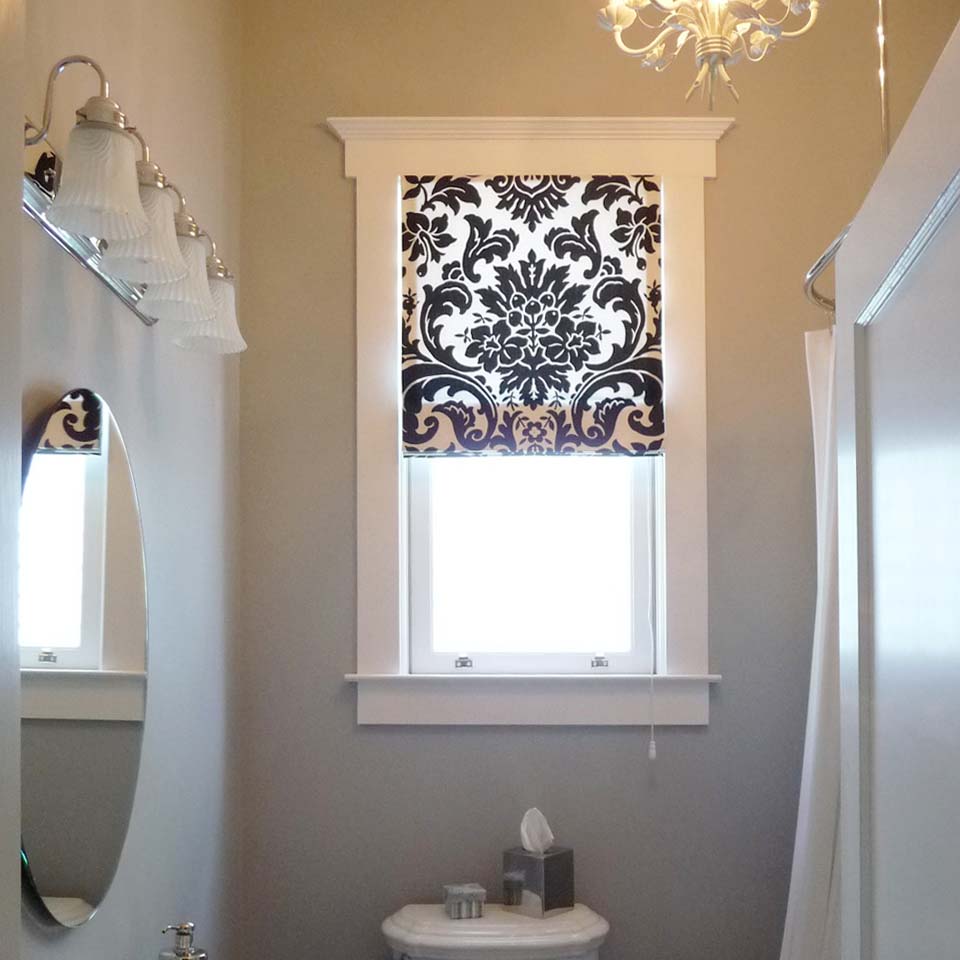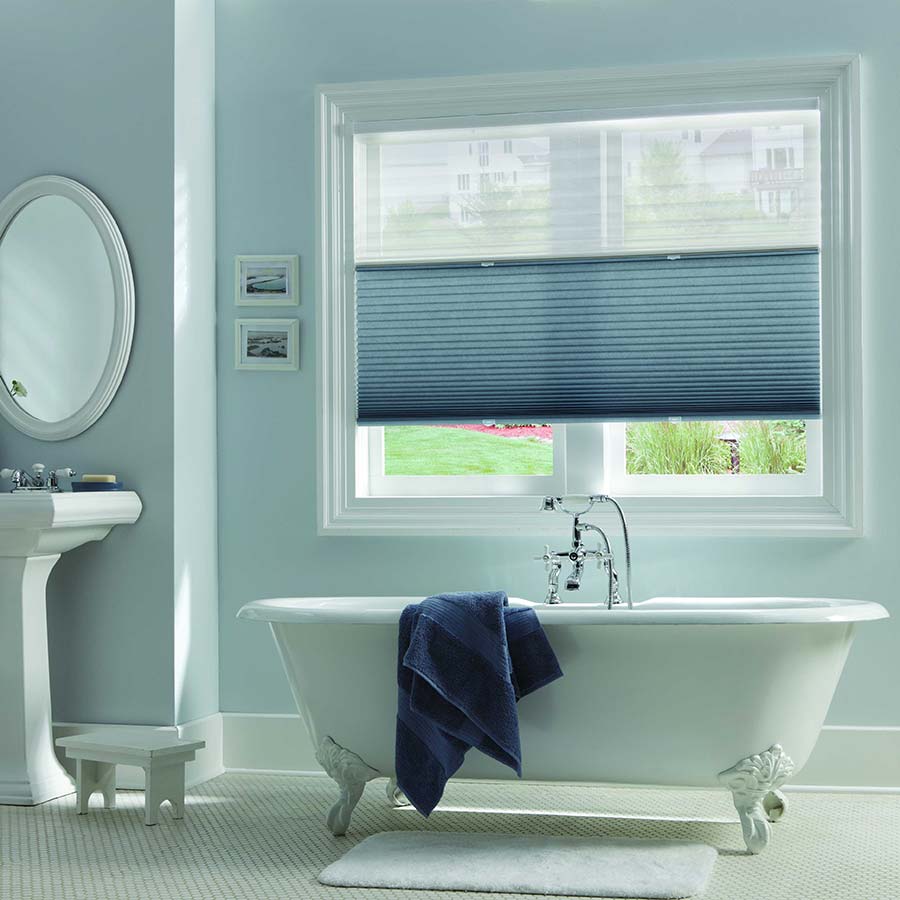Types of Blinds for Small Bathroom Windows

Choosing the right blinds for a small bathroom window can be a challenge. The space is often limited, and you need to consider factors like moisture resistance, privacy, and light control. Fortunately, several types of blinds are well-suited for this purpose, each with its own advantages and disadvantages.
Roller Blinds
Roller blinds are a popular choice for small bathrooms due to their simplicity and affordability. They are made of a single piece of fabric that rolls up onto a tube at the top of the window.
- Advantages:
- Roller blinds are relatively inexpensive, making them a budget-friendly option.
- They are easy to install and operate, with a simple pull cord or chain mechanism.
- Roller blinds come in a wide variety of colors and patterns, allowing you to match your bathroom décor.
- They are available in moisture-resistant materials, making them suitable for humid environments.
- Disadvantages:
- Roller blinds can be less effective at blocking out light than other types of blinds, especially if they are made of a thin fabric.
- They may not provide as much privacy as other options, especially if the fabric is translucent.
- Measure the width: Measure the width of the window frame at the top, middle, and bottom. Choose the smallest measurement. Add 1/2 inch to 1 inch to allow for proper installation and movement.
- Measure the height: Measure the height of the window frame from the top to the bottom. Add 1/2 inch to 1 inch to allow for proper installation and movement.
- Consider the mounting type: If you are mounting the blinds inside the window frame, use the measurements from step 1 and 2. If you are mounting the blinds outside the window frame, add the width and height of the frame to the measurements from step 1 and 2.
- For a small window, consider using blinds that are slightly wider than the window frame. This will create a more substantial look and feel. However, make sure they don’t extend beyond the window frame, as this can make the window appear smaller.
- For a larger window, consider using blinds that are the same width as the window frame. This will create a more balanced look.
- Consider the size of your bathroom. If your bathroom is small, avoid using large blinds, as they can make the space feel even smaller. Instead, choose blinds that are proportionate to the size of the window and the bathroom.
- Vertical blinds: Vertical blinds are a good option for small bathrooms because they can make the window appear taller and wider. They are also easy to adjust, allowing you to control the amount of light that enters the room.
- Horizontal blinds: Horizontal blinds are a classic choice for bathrooms. They are available in a wide range of materials, colors, and finishes, so you can find a style that complements your bathroom’s decor.
- Roman shades: Roman shades are a stylish option that can add a touch of elegance to your bathroom. They are available in a variety of fabrics, colors, and patterns, so you can find a style that matches your bathroom’s decor. They can also be used to create a more formal or traditional look.
- Roller shades: Roller shades are a simple and modern option for bathrooms. They are easy to clean and maintain, and they can be customized with different colors and patterns.
- Cellular shades: Cellular shades are a popular choice for bathrooms because they offer excellent insulation and light control. They are available in a variety of colors and patterns, and they can be customized with different operating systems, such as cordless or motorized.
- Vinyl blinds: Vinyl blinds are a popular choice for bathrooms because they are moisture-resistant and easy to clean. They are also relatively inexpensive. They are a good choice for high-humidity areas, but they can be prone to warping in extreme heat.
- Aluminum blinds: Aluminum blinds are another good option for bathrooms because they are moisture-resistant and easy to clean. They are also durable and long-lasting. They can be a good choice for modern bathrooms, but they can be noisy when moving.
- Wood blinds: Wood blinds can add a touch of warmth and elegance to your bathroom. However, they are not as moisture-resistant as vinyl or aluminum blinds, so they should be treated with a sealant to protect them from moisture. They are a good choice for bathrooms with a traditional or rustic style.
- Bamboo blinds: Bamboo blinds are a natural and eco-friendly option for bathrooms. They are moisture-resistant and easy to clean, and they can add a touch of warmth and natural beauty to your bathroom. They are a good choice for bathrooms with a tropical or Asian-inspired style.
- Inside Mount: This method involves mounting the blinds directly inside the window frame. It’s a great option for small windows, as it maximizes space and creates a clean, streamlined look. However, it requires precise measurements and may not be suitable for all window types.
- Outside Mount: This method involves mounting the blinds outside the window frame, typically on the wall or ceiling. It offers more flexibility in terms of window size and shape, but it can make the window appear smaller and may require more space.
- Measure and Mark: Measure the window carefully and mark the desired mounting positions on the wall or window frame.
- Install Brackets: Use a level to ensure the brackets are installed straight.
- Attach the Headrail: Slide the headrail onto the brackets and secure it with screws.
- Hang the Slats: Hang the slats onto the headrail, making sure they are evenly spaced.
- Adjust the Tilt: Adjust the tilt of the slats to control the amount of light entering the bathroom.
- Measure and Mark: Measure the window carefully and mark the desired mounting positions on the wall or window frame.
- Install Brackets: Use a level to ensure the brackets are installed straight.
- Attach the Roller Tube: Slide the roller tube onto the brackets and secure it with screws.
- Attach the Fabric: Attach the fabric to the roller tube, making sure it is taut and even.
- Install the Bottom Rail: Attach the bottom rail to the fabric, ensuring it is level.
- Measure and Mark: Measure the window carefully and mark the desired mounting positions on the wall or window frame.
- Install Brackets: Use a level to ensure the brackets are installed straight.
- Attach the Headrail: Slide the headrail onto the brackets and secure it with screws.
- Hang the Fabric: Hang the fabric onto the headrail, making sure it is even and hangs smoothly.
- Install the Bottom Rail: Attach the bottom rail to the fabric, ensuring it is level.
- For Limited Space: Consider using inside-mounted blinds or opting for slimmer blind styles, such as Venetian or roller blinds.
- For Awkward Window Shapes: Measure the window carefully and choose blinds specifically designed for unusual shapes, such as arched or bay windows. You may need to have blinds custom-made to fit the window perfectly.
- For Difficult Access: If the window is difficult to reach, consider using a stepladder or a stool to safely access the installation area.
Example: A simple white roller blind with a moisture-resistant coating can be an excellent choice for a small bathroom window, offering light control and a clean, minimalist look.
Choosing the Right Size and Style: Small Bathroom Window Blinds

Small bathroom window blinds – Selecting the perfect blinds for your small bathroom window involves more than just picking a color or pattern. You need to consider the size and style of the blinds to ensure they function well and complement your bathroom’s design.
Measuring for Small Bathroom Window Blinds
Accurate measurements are crucial for a perfect fit. Incorrect measurements can lead to blinds that are too short, too long, or too wide, making them ineffective and potentially unattractive.
Choosing the Right Size
The size of your blinds should be determined by the size of your window. Too large, and they will overwhelm the space, too small, and they won’t provide adequate coverage.
Choosing the Right Style
The style of blinds you choose can greatly impact the overall look and feel of your bathroom. Some popular styles include:
Choosing the Right Material
The material of your blinds is an important consideration, especially in a bathroom. You’ll want to choose a material that is moisture-resistant and easy to clean.
Tips for Installing Small Bathroom Window Blinds

Installing blinds in a small bathroom can be a challenge, but with the right approach, you can achieve a stylish and functional result. Consider the size and shape of your bathroom window, the type of blinds you’ve chosen, and the mounting options available.
Choosing the Right Mounting Method
The mounting method you choose will significantly impact the look and functionality of your blinds. For small bathroom windows, there are two main options: inside mount and outside mount.
Installing Different Types of Blinds
The installation process for different types of blinds can vary slightly. Here’s a general guide for installing common bathroom blind types:
Installing Venetian Blinds
Installing Roller Blinds
Installing Roman Blinds
Overcoming Challenges
Installing blinds in small bathrooms can present unique challenges, such as limited space or awkward window shapes. Here are some tips to overcome these obstacles:
Small bathroom window blinds can be a stylish and functional addition, providing privacy and light control. When considering bathroom flooring, it’s important to choose a material that’s both waterproof and durable. Cork flooring, often used in kitchens, is also a popular choice for bathrooms, as it’s naturally water-resistant and provides a warm, comfortable feel underfoot.
Is cork flooring good for kitchens and bathrooms ? To ensure a cohesive design, select bathroom blinds that complement the chosen flooring material, creating a harmonious and welcoming space.
Small bathroom window blinds can make a big difference in the overall feel of the space, especially when paired with the right flooring. If you’re considering a refresh, you might wonder can you put vinyl flooring in a bathroom ?
Vinyl is a great option for bathrooms, as it’s waterproof and easy to clean. When choosing blinds, consider light-filtering options for privacy and a more spa-like atmosphere.